William Notman arrived in Canada from Scotland in 1856 and swiftly established himself as Montreal’s most prominent photographer, with studio portraits forming the core of his work. Notman developed complex composite pictures for large groups and innovative techniques for creating winter scenes in his studio. Through his unparalleled combination of photographic and promotional skills, he was the first Canadian photographer to build an international reputation. Notman was still deeply involved in photography when he died in 1891 after a short illness.
Glasgow Early Years
The broad strokes of William Notman’s life could have anchored a Victorian novel. He was born March 8, 1826, in Paisley, Scotland, to William Notman and Janet Sloan. His father was a designer and manufacturer of woollen cloth; his paternal grandfather had been a dairy farmer. Young William Notman was the beneficiary of his family’s ambitious upward mobility. When he was a teenager the Notmans moved from the town of Paisley to the city of Glasgow. Although there are no known details of his schooling, it is evident that young William received a decent education, including training in painting and drawing. He had hopes of becoming a professional artist but was advised to join his father’s business, deemed a more stable line of work. As it turned out, this was not the case.

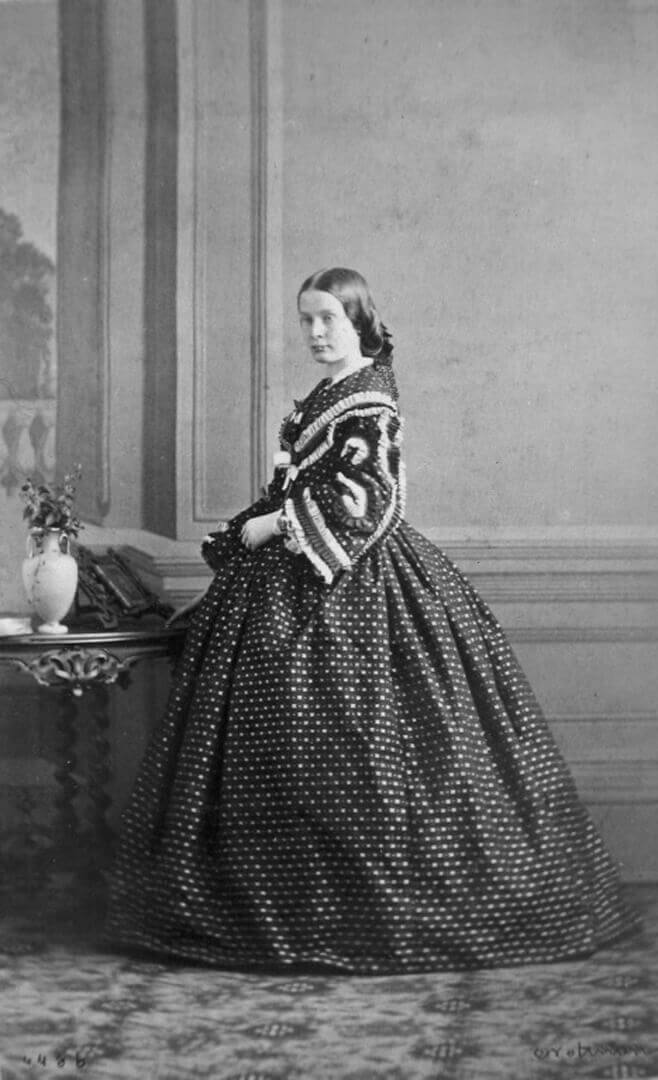
The Scottish economy took a serious downturn in the 1850s. The Notman family business had fallen behind on its payments to suppliers. In turn the suppliers limited their credit, making it difficult for the Notmans to keep their business afloat. In a desperate move, young William Notman fabricated additional client orders and tried to sell the goods to repay what they owed, but this only compounded their debt. Although he certainly knew that this was not above board, he seemed not to understand that it was entirely outside the law. Eventually the fraud was revealed and charges were laid. The historian Stanley Triggs concludes that the family likely decided that the best course of action was for Notman to flee the country so that the family could lay the blame safely at his feet and avoid prison for everyone. In 1856 Notman left Glasgow and sailed to Montreal, then the thriving hub of British North America, leaving behind his new wife, Alice Merry Woodwark, and baby, Fanny.
Fresh Start in Canada
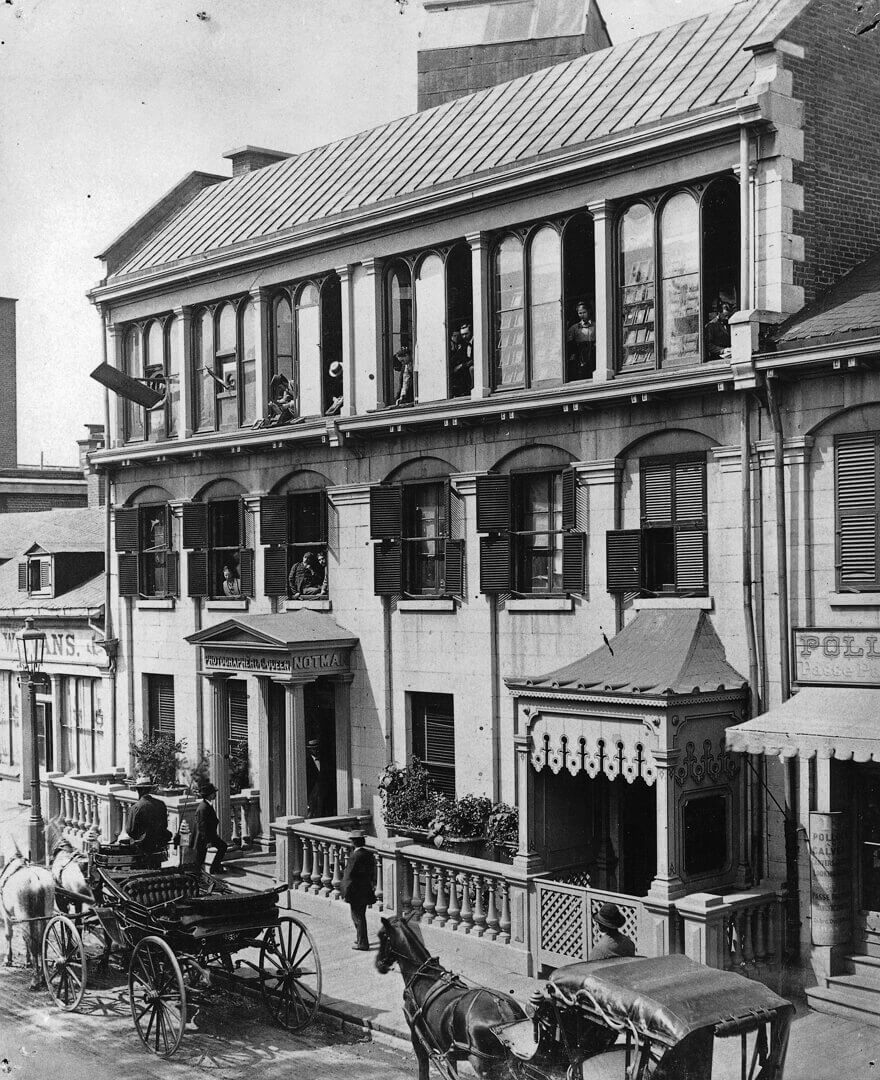
17 Bleury Street, Montreal, c. 1875, silver salts on paper, albumen process, 25 x 20 cm, McCord Museum.

10 x 8 cm, McCord Museum.
In Montreal, in 1856, Notman soon found a job with Ogilvy, Lewis & Company, a dry goods firm, and his wife and daughter joined him in the fall of the same year. When winter closed down imports for the season, Notman decided to set up a photography studio. He had no professional experience, but there is some evidence that he was an amateur photographer and may have received some photographic instruction in Glasgow. Scotland was a centre for the relatively new art, science, and business of photography, boasting exquisite professional practitioners like the studio partnership of David Octavius Hill and Robert Adamson, which operated in Edinburgh from 1843 to around 1847—as well as flourishing amateur groups. The Glasgow Photographic Association was founded in 1855, and enthusiasts marked the occasion with an exhibition of photographs and photographic apparatus. Notman would likely have been among the keen attendees.
In 1856 Montreal was not bereft of photographers, though city directories from the late 1850s suggest that fewer than ten professionals were operating, some long established and others, like Notman, just starting out. Notman cleverly sought and received both a loan for equipment and a job guarantee from his employer in case his photography venture failed. It seems that at first the studio was meant to be a seasonal activity when the dry goods business was slow, but very soon Notman was hiring assistants and running a thriving business year-round. He never returned to dry goods.
Notman set up his first studio in a small house on Bleury Street, close to the central business district and to the business and political elite who, along with their families, would form his core clientele. Patrons were ushered through the Notman family living quarters on their way to the small annex at the rear of the house.
Business Development
In two short years Notman expanded into a larger and much more elegant space next door and moved his residence offsite to Sherbrooke Street. By 1859 he was able to bring over the rest of his extended family from Scotland.
The year 1858 proved to be a fundamental turning point in Notman’s career. He was awarded the commission from the Grand Trunk Railway to document the building of the Victoria Bridge across the St. Lawrence River. This was a public project on a grand scale, and Notman wasted no opportunity to draw attention to his participation. He sent copies of his photographs to a wide array of journals and even produced a commemorative maple box of the photographs to present to Queen Victoria in 1860. In it, Notman mounted photographs in two lavish leather-bound portfolios with silver clasps. Legend has it that she was so pleased that she named him “Photographer to the Queen.”
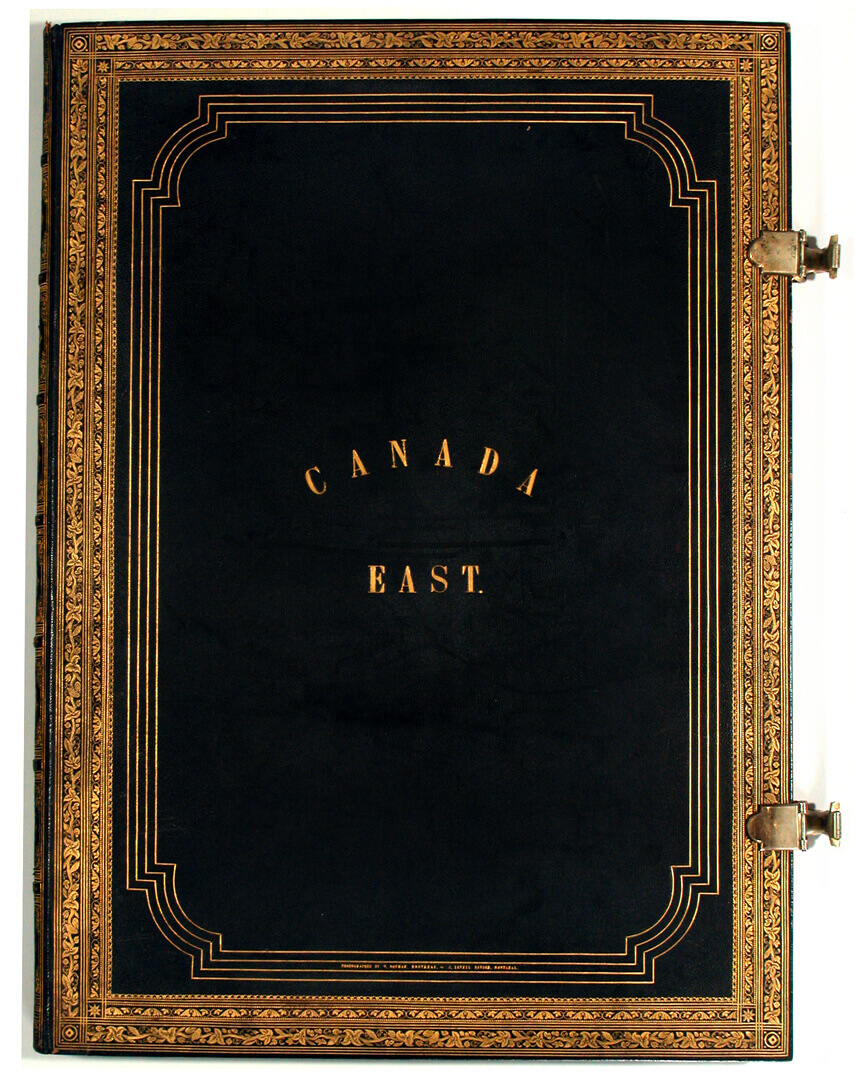
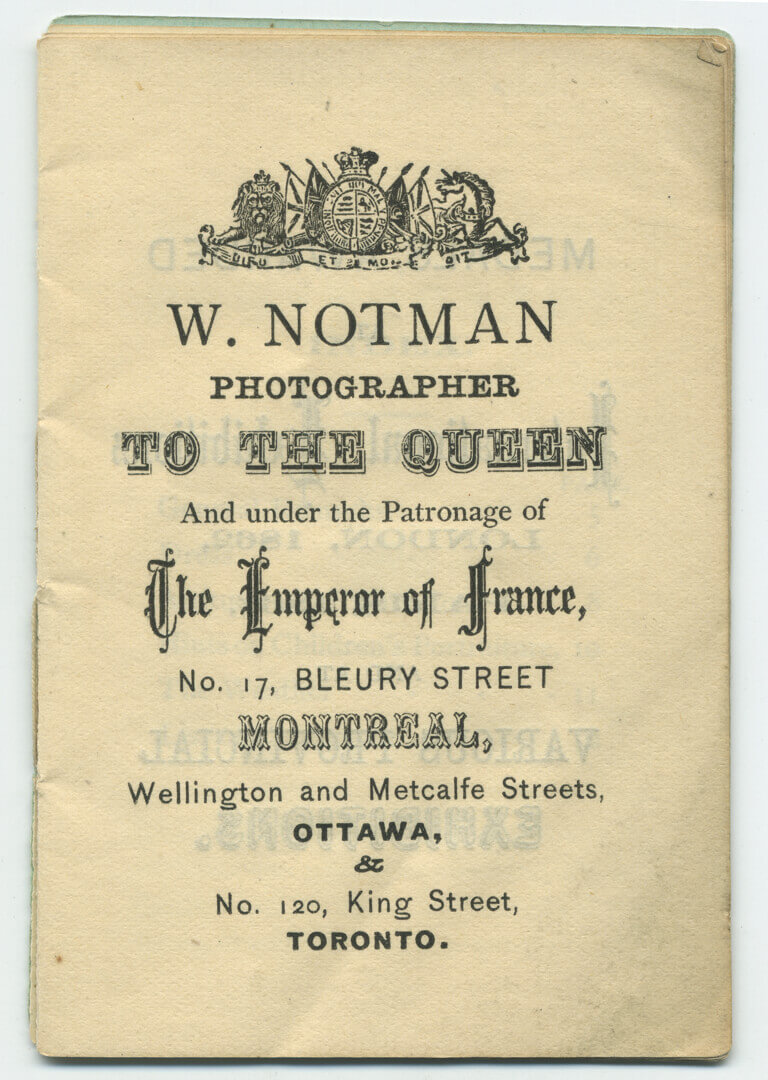
In 1860 Notman hired the established painter John Arthur Fraser (1838–1898) to lead the business’s art department and a young Henry Sandham (1842–1910) to assist. The department was responsible for painting backdrops, retouching negatives, cutting out individual figures and pasting them into composite groups, and hand-colouring prints. The work of the art department became an integral part of the studio’s appeal and of its competitive advantage in the marketplace.
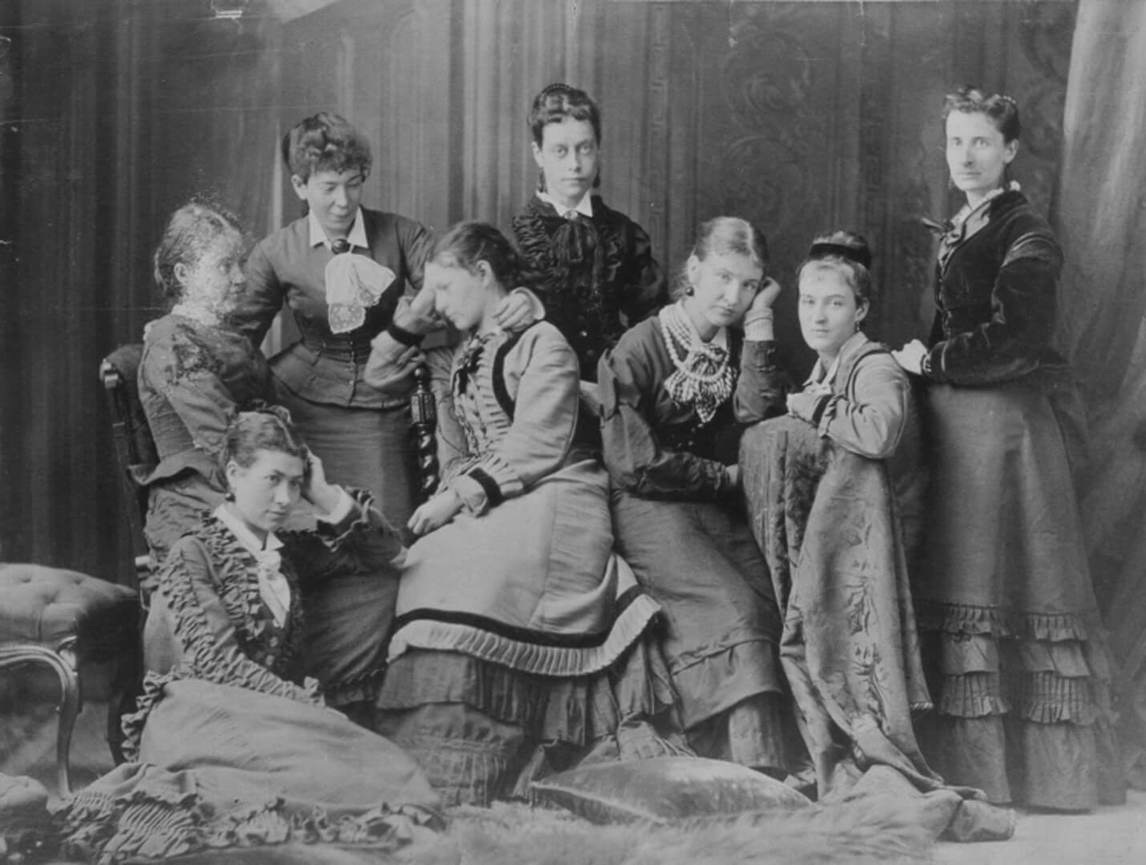
By 1864 Notman’s Montreal studio had thirty-five employees, both men and women, including photographers and artists, apprentices, studio and darkroom assistants, receptionists, bookkeepers, and dressing-room assistants. To some extent studio labour was divided according to class, skill, and gender. Working-class women, for example, had the dirty and laborious job of preparing paper and printing negatives, whereas middle-class women worked in the art department, mounting or retouching photographs. The account books show that the staff were decently compensated and that Notman kept them steadily employed even during periods of financial hardship. The loyalty Notman showed and expected from his staff was a crucial tool in building the business.
From the earliest days of his studio, Notman and his photographers fanned out across the British territories and into the northeastern United States. Often they were fulfilling commissions or capturing landscape views to add to their growing collection that was available to tourists, locals, and other studios. In 1868, a year after Confederation, Notman established a studio in Ottawa and soon set up branches and partnerships in Toronto and Halifax, usually with a trusted associate in charge.
Notman carefully nurtured talent in his studios and offered partnerships or managerial positions in the branches as a way of retaining skilled staff. He placed John Fraser in charge of his Toronto branch and called it Notman & Fraser. He offered a junior partnership in the Montreal studio to Henry Sandham in 1872, changing the firm’s name to Notman & Sandham. Always on the lookout for new opportunities, in 1869 Notman garnered a commission to produce student and faculty portraits at Vassar College in New York State. He developed this line of business quickly and eventually set up seasonal branches at Harvard and Yale. At the height of his empire in the 1880s, Notman’s name was on twenty studios.
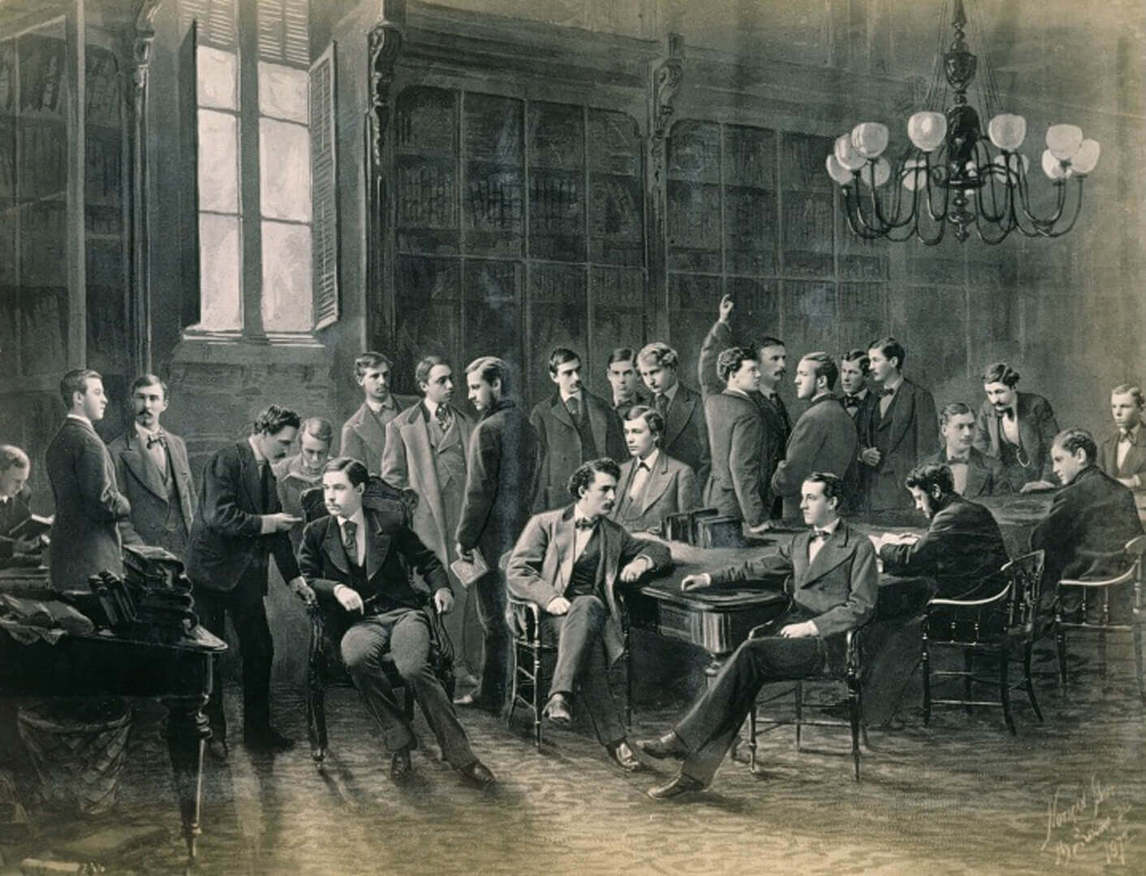
Montreal Art and Society
Notman’s success in business both depended on and fuelled his social role in Montreal society. His Scottish roots helped immensely. A significant number of Anglo Montrealers hailed from Scotland, and many of these were ambitious entrepreneurs like Notman. Early letters from Alice Notman to her parents confirm that the couple found a warm welcome in Montreal; when Alice and Fanny first arrived, the young family stayed for several months with a Scottish family with whom they had mutual friends back home.

The comfort of a familiar tribe must have eased the Notmans’ transition, but William Notman also worked hard to integrate himself into the wider Montreal scene. He became an Anglican and rose to play an important role in the church. He bought a country house on the South Shore and became an avid sailor, helping to found a local sailing club. Notman also became an avid patron of the arts. He helped to establish the Art Association of Montreal in 1860, offering the reception room of his studio as a meeting space and later as an exhibition space. He further supported the association’s activities by lending paintings from his own growing collection for exhibitions and donating photographs for prizes. At a time when photography was still considered by some to fall outside the fine arts, Notman’s leadership was both generous and savvy. His first clients were his Scottish contemporaries, but before long Notman was photographing every major social and political figure who passed through Montreal.
William and Alice had seven children, and all but the beloved first born, Fanny, survived to adulthood. The three boys trained as photographers under their father and were employed in the family business where Notman continued to work until his death from pneumonia in 1891. His eldest son, William McFarlane Notman, became a partner in 1882, at which point the name of the studios changed to William Notman & Son. The younger William took over as head of the Notman operations after his father’s death. In turn his younger brother Charles took over in 1913 and ran the business until 1935. The business was closed that year, and over 400,000 negatives and prints in its archives were sold to Associated Screen News, a Montreal-based company that made newsreels.


 About the Author
About the Author
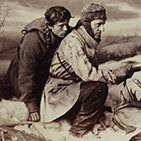 More Online Art Books
More Online Art Books
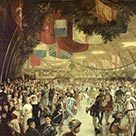 Acknowledgements
Acknowledgements